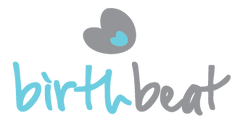Food Allergies in Babies and Children
Food allergies in babies and children can be a significant concern for parents. Especially when it comes to introducing allergen foods to babies for the first time. As a parent, you need to be informed about food allergies, common food allergens, how to safely introduce allergens to your little ones. Plus, what to do if an allergic reaction occurs and how to identify the signs of anaphylaxis which we cover inside our Online Baby & Child First Aid Course.
Understanding Food Allergies
What is a food allergy?
A food allergy is when a persons immune system reacts to a type of food which is normally a harmless food to most people. When the allergen food is consumed, the immune system identifies the food as harmful and releases chemicals that trigger an allergic reaction.
How common are food allergies?
Food allergies occur in around 10% of infants and 4-8% of children in Australia and New Zealand.
Mild-moderate food allergies are more common than severe food allergies (anaphylaxis). However, it is interesting to mention that Anaphylaxis related hospital admissions have increased by 5x in the last 20 years.
What are the most common food allergens?
An allergen food refers to the type of food which causes an individual to have an allergic reaction. The most common food allergens include:
- Milk
- Peanuts
- Tree nuts
- Fish
- Shellfish/ Crustaceans
- Eggs
- Soy
- Wheat
- Sesame
Introducing Allergen Foods To Babies
When to introduce allergen foods:
It is recommended to introduce allergen foods into the diet from 6 months when solid foods are being introduced.
Research suggests that introducing allergens from 6 months may help reduce the risk of developing a serious allergy.
How to safely introduce allergens:
1. Introduce one, single-ingredient allergen food at a time. This will allow you to easily identify which food caused the reaction.
2. Introduce the allergen food early in the day. (Don’t introduce them at dinner time). This means you will be awake to monitor for a reaction throughout the day.
3. Test the allergen first if it makes you feel more comfortable. To test an allergen food before your little one eats it, rub a small amount on the inside of their lip. If there is no reaction after a few minutes, then try letting bub eat it.
4. Modify foods for choking prevention. For example, when introducing nuts, modify into a paste – do not use full or even chopped up nuts. Remember your little one is learning how to manoeuvre food around there mouth and swallow the right amount. Also be prepared, and know what to do if choking occurs. Get our free choking guide here.
5. Get educated and be prepared for a reaction. Learn the signs and symptoms of allergic reactions and what to do if a reaction occurs.
Understanding Allergic Reactions
Allergic reactions can range from mild, moderate to severe. A severe reaction is Anaphylaxis.
Signs & symptoms of mild-moderate food allergies:
- Hives or red welts (bumps) on the skin
- Swelling of the lips, face or eyelids
- Tingling in or around the mouth
- Stomach pains
- Vomiting
- Diarrhoer
Signs & symptoms of Anaphylaxis:
- Difficulty breathing or noisy breathing
- Swelling of the tongue
- Swelling of the throat – this can cause drooling
- Difficulty talking or hoarse voice
- Cough or wheeze
- Looking pale
- Collapse or going ‘floppy’
What to do if a mild – moderate reaction occurs:
- Take the food away and clean it off your little one.
- Stop giving them the food.
- Monitor for symptoms of anaphylaxis.
- See your doctor for advice.
What to do if an Anaphylaxis reaction occurs:
Anaphylaxis is life-threatening and must be taken seriously.
- Call Emergency Services (000 in Aus) immediately and ask for an ambulance.
- Use Epi-pen (if prescribed and available). If you are introducing allergens, you likely will not have one.
- Follow the instructions provided by Emergency Services.
Getting Educated as a Parent or Carer
Allergies are very serious and something many parents fear. Inside our Online Baby & Child First Aid Course, Emergency Nurse – Edwina covers a full module on allergic reactions and anaphylaxis. The course is designed specifically to give parents and carers the knowledge to care for their little one while sick, provide basic and life-saving, emergency first aid. Find out more about the course here.



